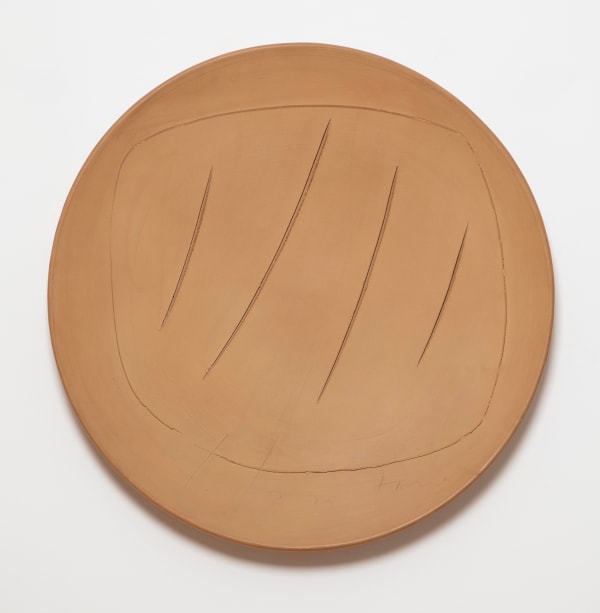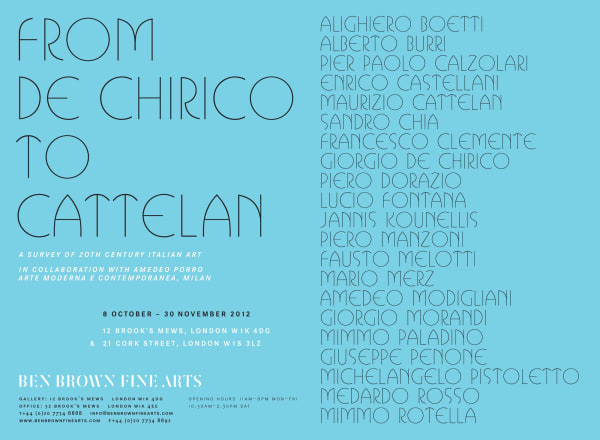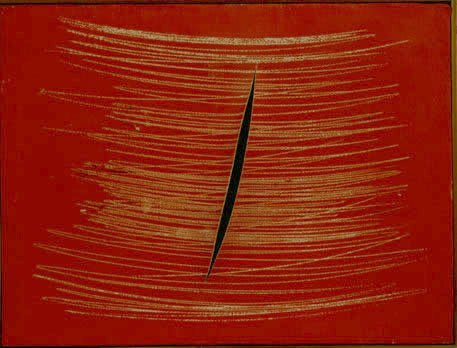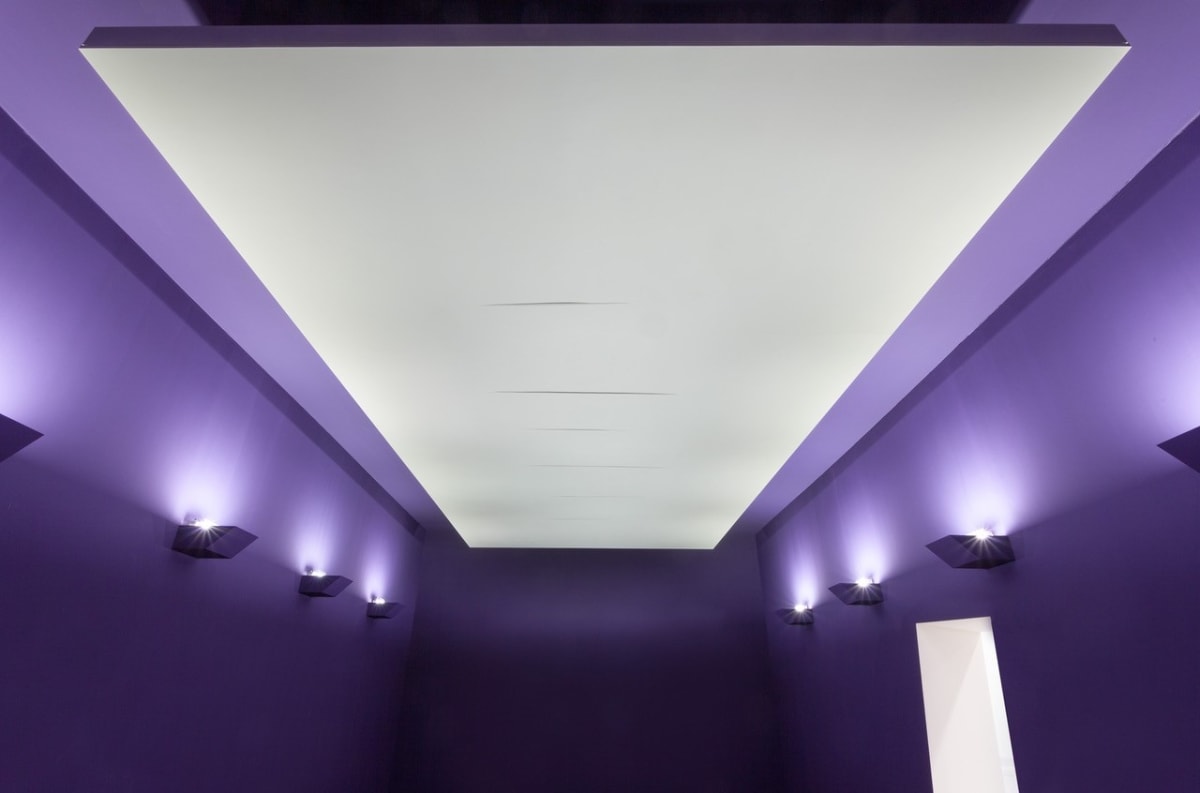Lucio Fontana was born in Rosario, Argentina, in 1899, and died in Comabbio, Italy, in 1968. Fontana is renowned for his radical rejection of all traditional prerequisites for creating art, redefining the very notion of what art could be. Initially trained as a sculptor, Fontana divided his time between Italy and Argentina before the onset of World War II. Seeking refuge from the conflict, he returned to Buenos Aires, where in 1946 he founded the Altamira Academy, a hub of cultural exchange and intellectual fervour. It was here, within this dynamic environment of emerging artists and theorists, that the Manifesto Blanco (White Manifesto) was conceived. This pivotal text laid the theoretical foundation for Spazialismo (the Spatialist Movement), an avant-garde approach spearheaded by Fontana, which sought to synthesise space, time, and matter into a new artistic language.
Upon his return to Milan in 1948, Fontana embarked on his seminal Concetto spaziale (Spatial Concept) series, a body of work that would come to define his legacy. In these pieces, monochrome canvases were incisively slashed with tagli (cuts) or punctured with buchi (holes), creating ruptures that exposed the void beyond the surface. These incisions, both gestural and conceptual, challenged the sanctity of the canvas as a two-dimensional, inviolable plane, revealing a previously hidden spatiality. By tearing through the surface, Fontana introduced real space into the work, dissolving the illusionistic boundaries of traditional painting and suggesting the infinite expanse that lies beyond material form. Fontana’s revolutionary interventions – his acts of cutting and piercing – were more than mere formal experiments; they were a response to the cultural and technological shifts of the 20th century. For Fontana, the explosive scientific progress and rapid societal transformation of the post-war era demanded a new form of artistic expression, one that could encapsulate the boundless potential of the modern world. His works, imbued with the spirit of discovery, positioned art not as a static object but as an evolving force that engaged with the dynamic energies of space and time.
Fontana attended the Accademia di Belle Arti di Brera in Milan from 1928 to 1930. Since 1930, his work has been exhibited regularly at the Venice Biennale and he was awarded the Grand Prize for Painting in 1966. Major retrospectives of Fontana’s have taken place at the Musée d’Art Moderne de la Ville de Paris, Paris; Guggenheim Museum, Venice; Hayward Gallery, London; the Centre Georges Pompidou, Paris; Fundación ‘la Caixa’, Barcelona; Stedelijk Museum, Amsterdam; and the Whitechapel Gallery, London. Fontana’s works can be found in the permanent collections of more than 100 museums around the world, including the Galleria Nazionale d’Arte Moderna, Rome; Centre Georges Pompidou, Paris; Stedelijk Museum, Amsterdam; and the Museum of Modern Art (MoMA), New York.
-

Beyond the Canvas
8 - 30 Mar 2024We are thrilled to announce Beyond the Canvas opening March 7, 2024. Join us for an exclusive presentation featuring new works by gallery artists, including Awol Erizku, Yoan Capote, and Ena Swansea, alongside a curated selection highlighting influential post-war masters. Additionally, we will also present a captivating selection of artist and independent designer jewellery from Louisa Guinness Gallery. Beyond the Canvas invites us to reconsider the notion of representation, delve into the layers of artistic expression and discover new perspectives through media.Read more -

Knokke Summer Pop-Up!
9 Jul - 26 Aug 2020Ben Brown Fine Arts, London and Hong Kong, is thrilled to announce our first Summer Pop-Up in Knokke, Belgium. We look forward to welcoming our clients to view a curated...Read more -

From De Chirico to Cattelan
A Survey of 20th Century Italian Art 8 Oct - 29 Nov 2012 LondonAlighiero Boetti Alberto Burri Pier Paolo Calzolari Enrico Castellani Maurizio Cattelan Sandro Chia Francesco Clemente Giorgio de Chirico Piero Dorazio Lucio Fontana Jannis Kounellis Piero Manzoni Fausto Melotti Mario Merz...Read more -

Heinz Mack/Lucio Fontana
6 Oct - 21 Dec 2010Ben Brown Fine Arts is delighted to announce the opening of Heinz Mack /Lucio Fontana, a groundbreaking show placing the oeuvres of these two masters of 20th Century Art in...Read more -

LUCIO FONTANA
Paintings, Sculptures and Works on Paper 16 Jun - 14 Nov 2008Read more -

Caio Fonseca
New Paintings 17 Oct - 16 Dec 2005Read more -

Lucio Fontana
Paintings, Sculptures and Drawings 5 Feb - 20 May 2005Read more
-
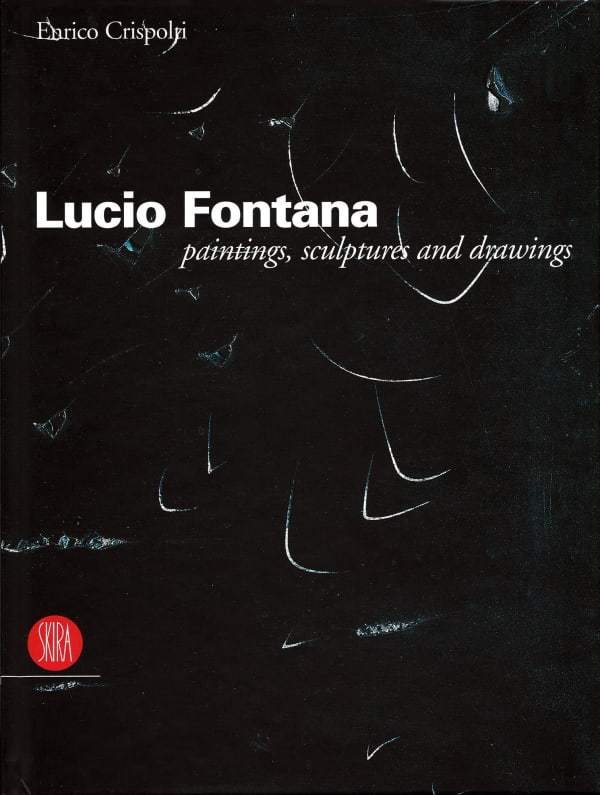
Lucio Fontana
Paintings, Sculptures and Drawings 2005Hardback, 86 pagesRead more
Publisher: Skira
ISBN: 88-7624-225-2
Dimensions: 28.7 x 26.1 cm -
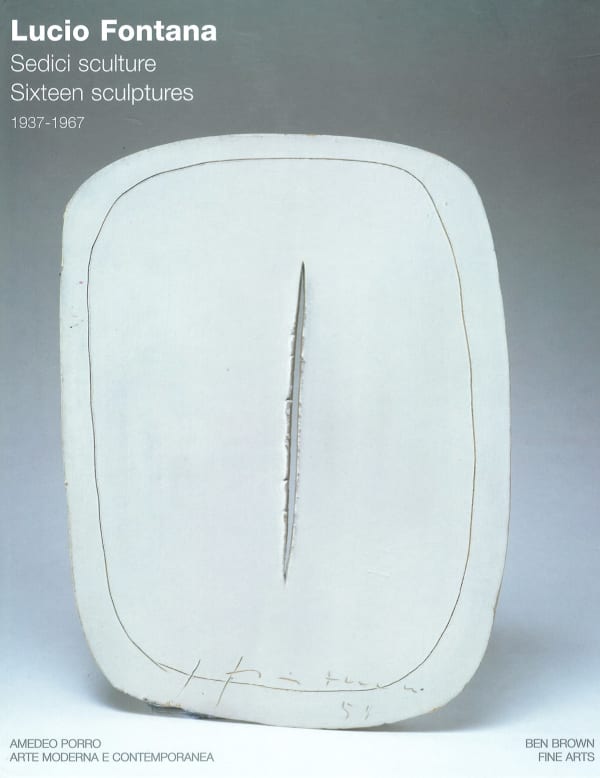
Lucio Fontana
Sixteen Sculptures 2007Hardback, 112 pagesRead more
Publisher: SilvanaEditoriale
ISBN: 97888-3661014-3
Dimensions: 28.7 x 23.8 cm -
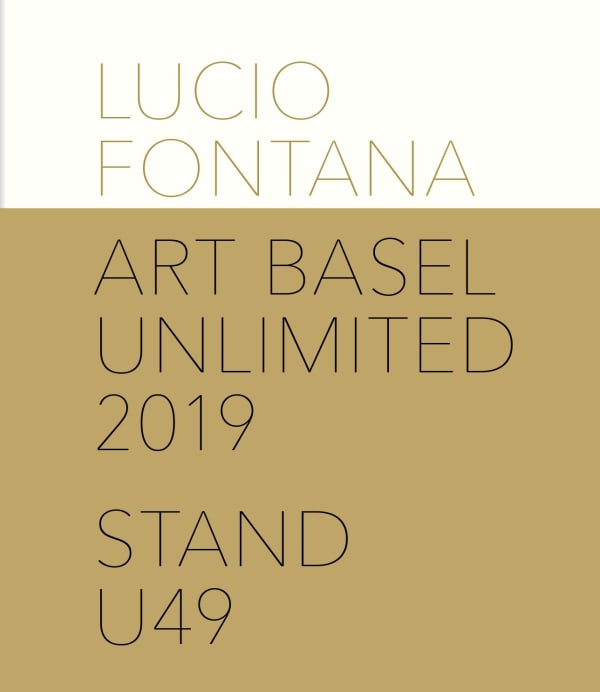
Lucio Fontana
Ambiente spaziale con tagli, 1960 2019Hardback, 42 pagesRead more
Dimensions: 30.7 x 22.7 cm -
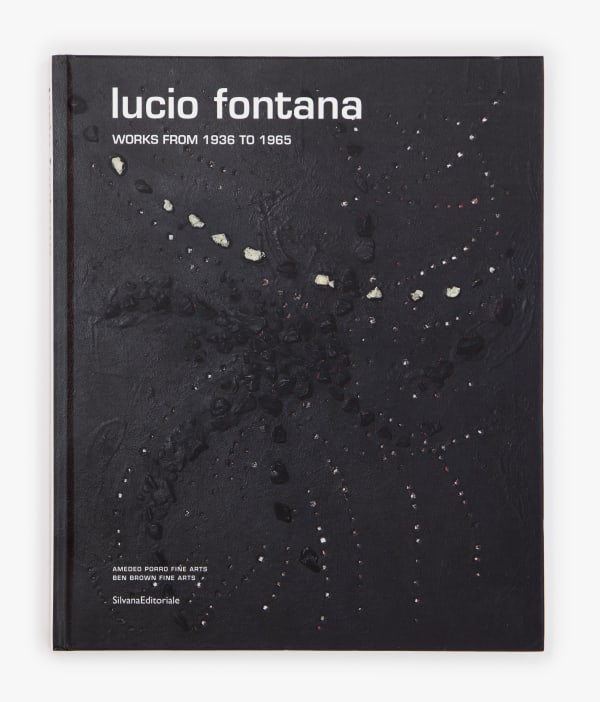
Lucio Fontana
Works from 1936 to 1965 2015Hardback, 96 pagesRead more
Dimensions: 28.6 x 23.6 cm
-
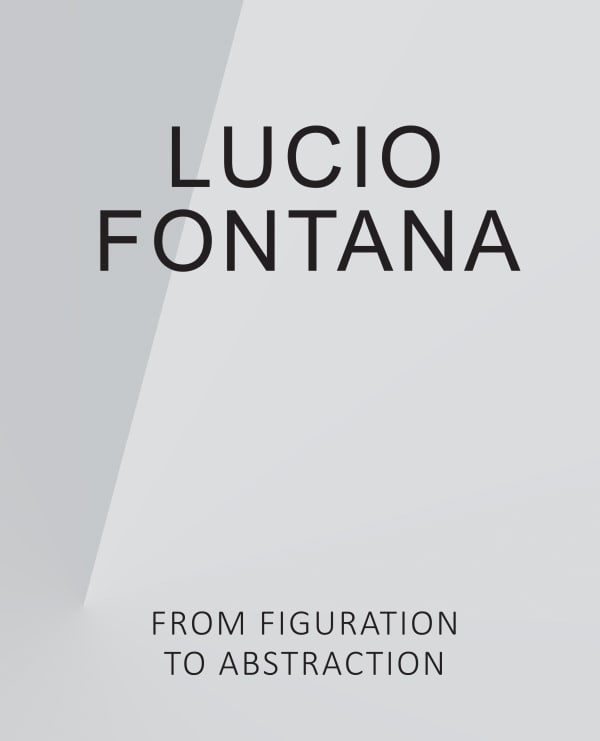
Lucio Fontana
From Figuration to Abstraction Ben Brown Fine Arts, 2021Hardcover, 110 pagesRead more
Publisher: Ben Brown Fine Arts
Dimensions: 26 x 21 x 1cm -
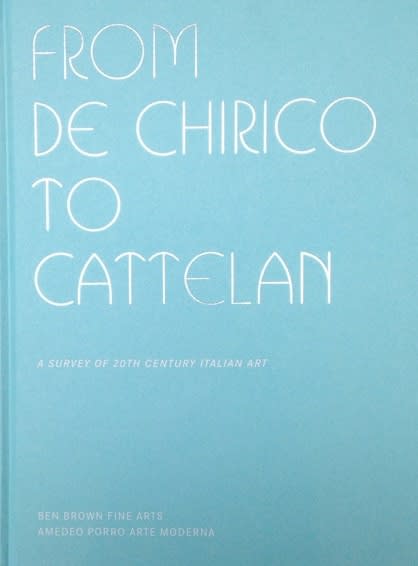
From de Chirico to Cattelan
A Survey of 20th Century Italian Art 2012Hardback, 72 pagesRead more
Dimensions: 30.6 x 22.7 cm -
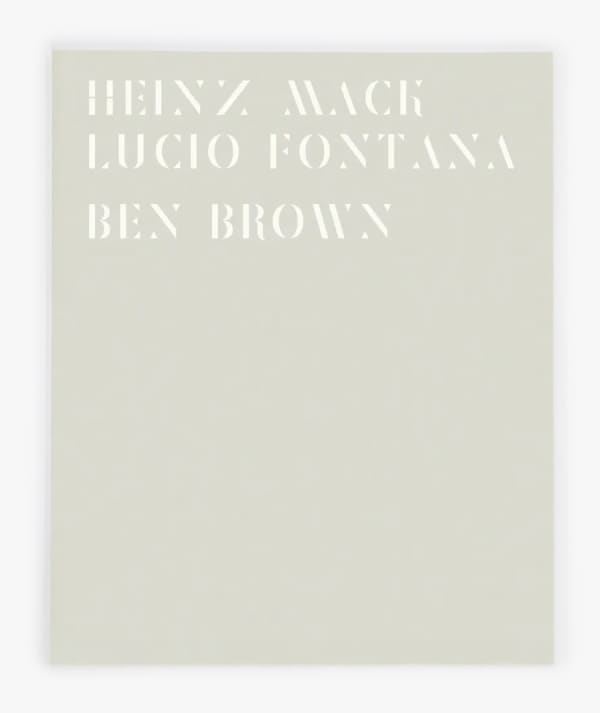
Heinz Mack/Lucio Fontana
2010Paperback, 56 pagesRead more
Dimensions: 29 x 24.1 cm
-
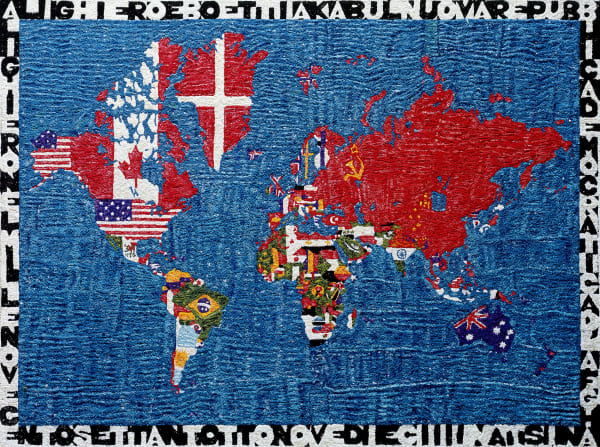
miart
3 - 6 Apr 2025Ben Brown Fine Arts is pleased to announce our participation in Miart , Milan’s leading modern and contemporary art fair, taking place from 3–6 April...Read more -
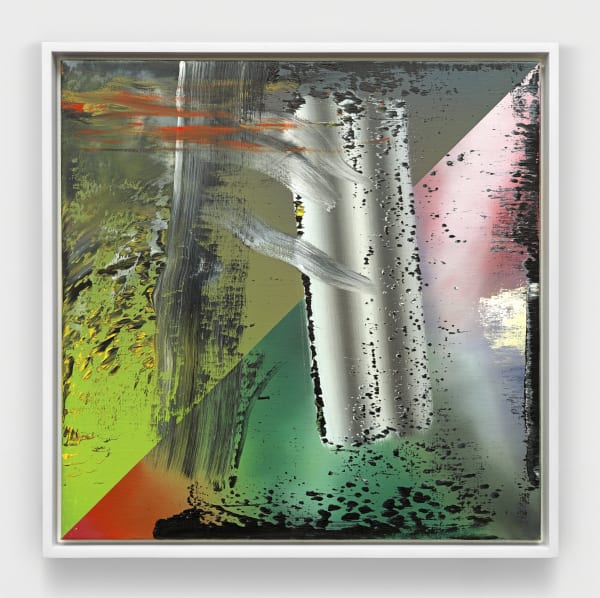
Art Basel Hong Kong
26 - 30 Mar 2025Ben Brown Fine Arts is pleased to announce its return to Art Basel Hong Kong 2025 , presenting a meticulously curated selection of works by...Read more -
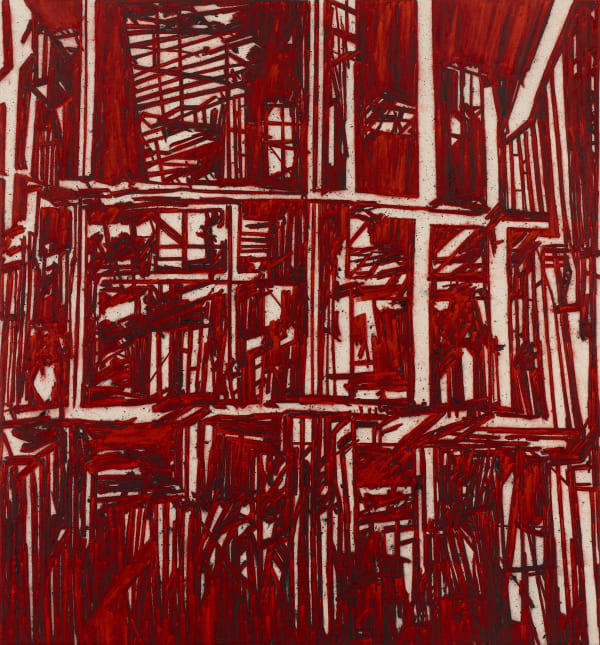
TEFAF Maastricht
13 - 20 Mar 2025We are pleased to return to TEFAF Maastricht with a carefully curated selection of works by leading international artists from the gallery’s renowned programme. This...Read more -

Art Basel Miami Beach
4 - 8 Dec 2024Ben Brown Fine Arts is thrilled to return to Art Basel Miami Beach 2024 at Booth H2, showcasing a meticulously curated selection of masterpieces by...Read more




